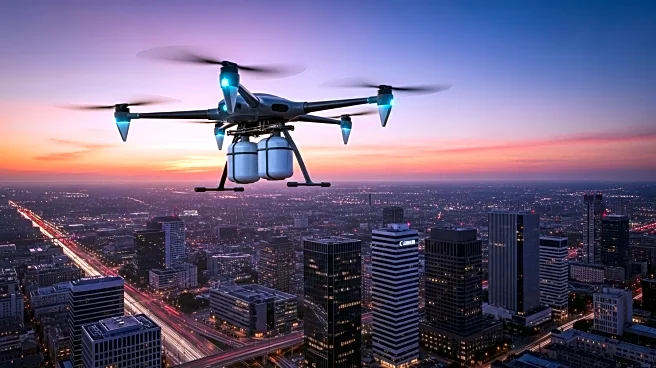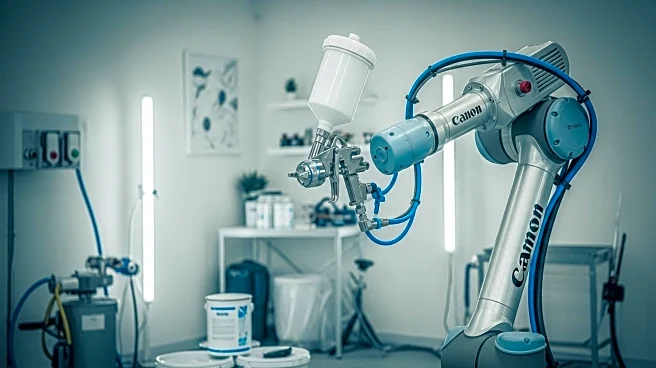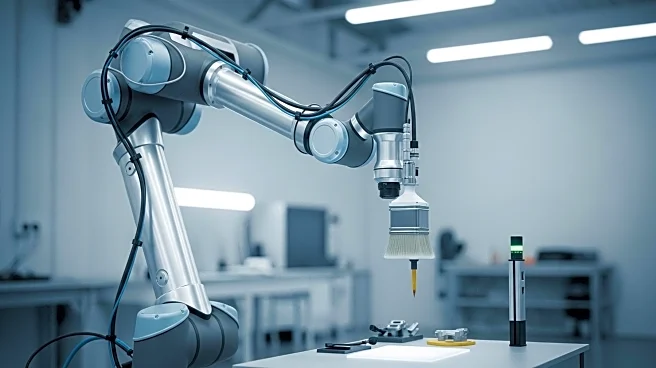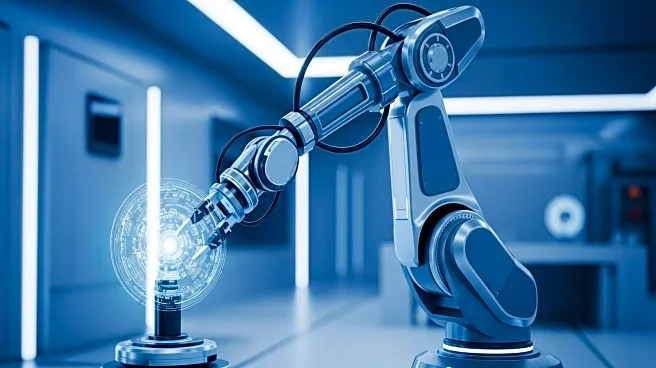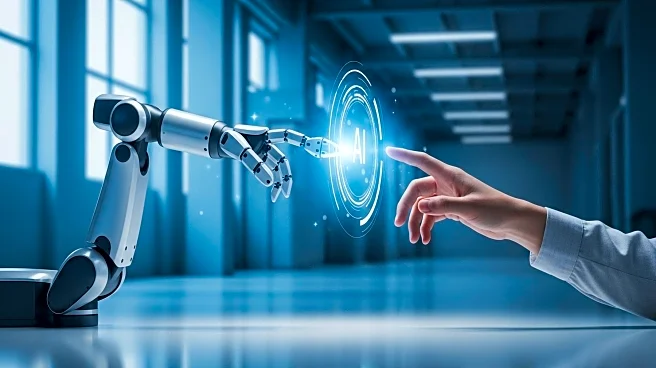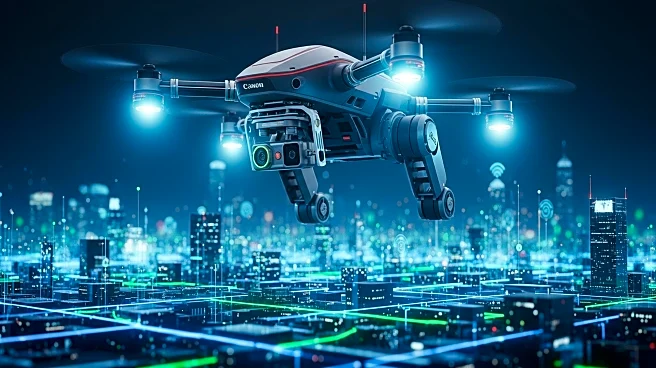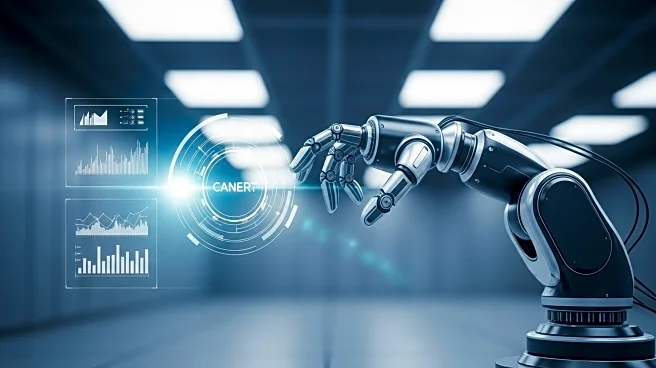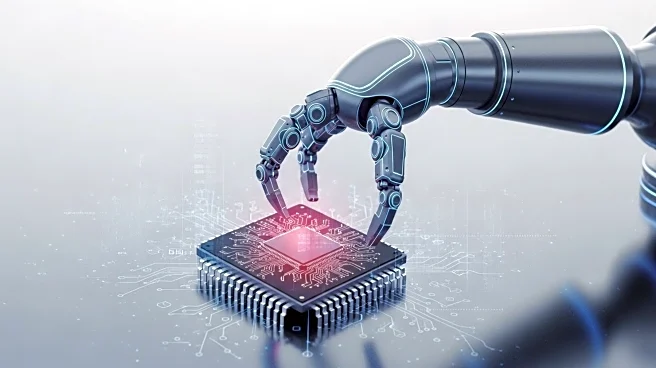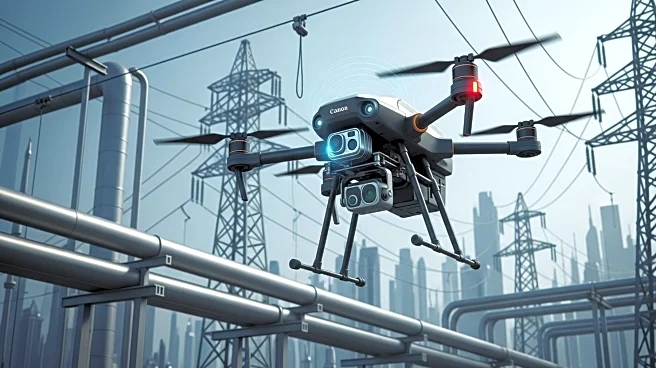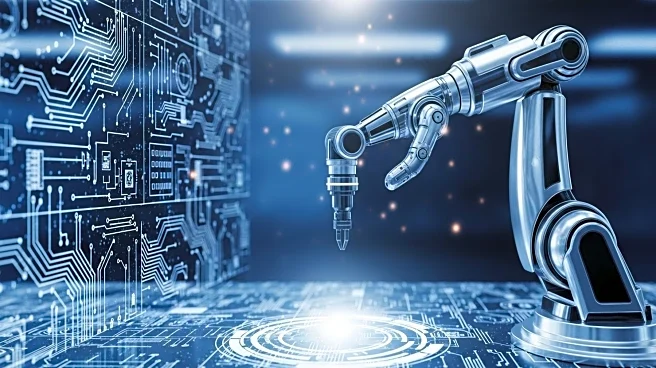What's Happening?
Lucid Bots has launched a new painting and coating capability for its Sherpa Drone, originally designed for cleaning building exteriors. The drone now features an automated painting system, allowing it to paint structures by following a pre-programmed path. This innovation is part of Lucid Bots' strategy to expand into new market verticals with modular robotics. The Sherpa Drone can operate continuously with a power tether, covering large areas quickly and efficiently. Lucid Bots, backed by Y Combinator and other investors, aims to redefine essential work through automation, enhancing productivity and safety in industries facing labor shortages.
Why It's Important?
The introduction of AI-driven drones for commercial painting represents a significant advancement in automation technology. As the U.S. undergoes a major infrastructure buildout, the demand for construction workers is rising, yet the industry faces a workforce shortage. Lucid Bots' Sherpa Drone addresses these challenges by offering a safer and more efficient solution for painting and coating tasks. This technology not only improves productivity but also reduces safety risks associated with working at heights. The convergence of robotics and AI in practical applications like commercial painting highlights the potential for automation to transform industries and address labor shortages.
What's Next?
Lucid Bots plans to continue developing its Sherpa Drone's capabilities, aiming for increased autonomy and the ability for a single operator to deploy multiple drones simultaneously. As the technology evolves, the company may explore additional applications for its drones in other sectors, such as construction and maintenance. The success of the Sherpa Drone could lead to wider adoption of AI-driven automation in industries facing similar labor challenges, potentially influencing policy and investment decisions in the robotics sector.
Beyond the Headlines
The use of AI and robotics in commercial painting raises ethical and economic considerations, such as the impact on employment and the need for regulatory frameworks to ensure safety and reliability. As automation becomes more prevalent, discussions around the balance between technological advancement and workforce displacement are likely to intensify. Lucid Bots' approach to embodied AI, which emphasizes practical applications, may serve as a model for other companies seeking to integrate AI into their operations.

